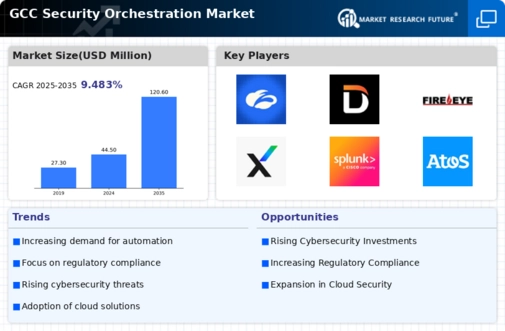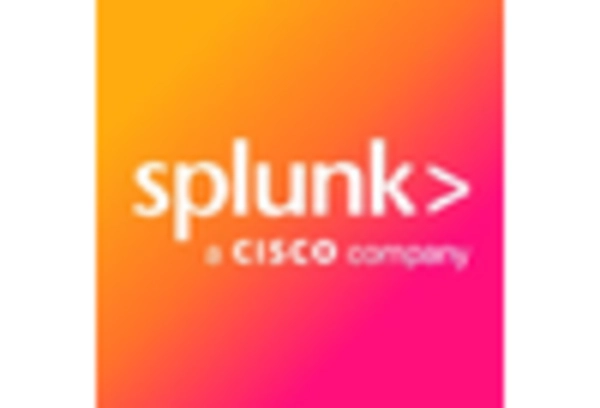Rising Cyber Threat Landscape
The increasing frequency and sophistication of cyber threats in the GCC region is a primary driver for the security orchestration market. Organizations are facing a myriad of challenges, including ransomware attacks, data breaches, and advanced persistent threats. As a result, the demand for integrated security solutions that can effectively respond to these threats is surging. According to recent data, the GCC region has witnessed a 30% rise in cyber incidents over the past year, prompting businesses to invest in security orchestration tools. These tools enable organizations to streamline their security operations, enhance incident response times, and improve overall security posture. Consequently, the security orchestration market is expected to grow significantly as companies prioritize the protection of their digital assets against evolving cyber threats.
Regulatory Compliance Requirements
The stringent regulatory landscape in the GCC is driving the adoption of security orchestration solutions. Governments in the region are implementing robust cybersecurity regulations to protect sensitive data and ensure compliance with international standards. Organizations are increasingly required to demonstrate their adherence to these regulations, which often necessitates the deployment of advanced security measures. The security orchestration market is benefiting from this trend, as businesses seek solutions that can automate compliance reporting and streamline security processes. For instance, the implementation of the UAE's Data Protection Law has led to a surge in demand for security orchestration tools that can help organizations manage their compliance obligations effectively. This regulatory pressure is likely to continue fueling growth in the security orchestration market as companies strive to meet evolving compliance requirements.
Increased Investment in Cybersecurity
The GCC region is witnessing a substantial increase in investment in cybersecurity initiatives, which is significantly impacting the security orchestration market. Organizations are allocating larger budgets to enhance their security infrastructure, driven by the recognition of cybersecurity as a critical business priority. Recent reports indicate that cybersecurity spending in the GCC is projected to reach $30 billion by 2026, reflecting a compound annual growth rate (CAGR) of 12%. This influx of capital is enabling businesses to adopt advanced security orchestration solutions that facilitate better threat detection, response, and management. As organizations continue to prioritize cybersecurity, the security orchestration market is poised for robust growth, with an emphasis on integrating various security tools and automating processes to improve overall efficiency.
Growing Awareness of Cybersecurity Risks
There is a growing awareness of cybersecurity risks among organizations in the GCC, which is significantly influencing the security orchestration market. As businesses become more cognizant of the potential impact of cyber threats on their operations, they are increasingly seeking comprehensive security solutions. This heightened awareness is leading to a greater emphasis on proactive security measures, including the implementation of security orchestration tools that can enhance threat detection and response capabilities. Surveys indicate that over 70% of organizations in the GCC recognize cybersecurity as a top priority, prompting them to invest in solutions that can provide real-time visibility and automated incident response. This trend is likely to continue, driving further growth in the security orchestration market as organizations strive to mitigate risks and protect their digital assets.
Shift Towards Cloud-Based Security Solutions
The ongoing shift towards cloud computing in the GCC is driving the demand for cloud-based security orchestration solutions. As organizations migrate their operations to the cloud, they require security tools that can seamlessly integrate with their cloud environments. This trend is particularly pronounced in sectors such as finance and healthcare, where data security is paramount. The security orchestration market is adapting to this shift by offering solutions that provide visibility and control over cloud-based assets. According to industry estimates, the adoption of cloud security solutions in the GCC is expected to grow by 25% annually, indicating a strong market potential for security orchestration tools that cater to cloud environments. This transition is likely to reshape the security landscape, emphasizing the need for orchestration solutions that can effectively manage security across hybrid and multi-cloud infrastructures.

















Leave a Comment